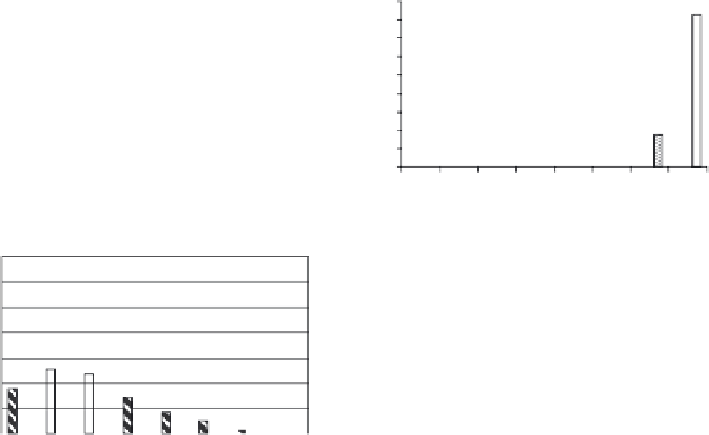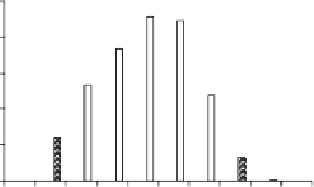Chemistry Reference
In-Depth Information
A few physical property distributions of the fully enumerated library are shown in
Figure 9.19. The molecular weight, hydrogen bond acceptors (HBAs), hydrogen bond
donors (HBDs) and AlogP98
[
10
]
are depicted along with a representation of the MDDR
[
49
]
and Merck's internal compound collection for reference. In the web application the dotted
bars, representing the proposed library, are dynamically linked to the fragments which con-
tribute to molecules with the specific property, sorted by frequency of occurrence. In this
way, users can quickly identify which fragments should be replaced or dismissed based on
their effect on final property distributions. The virtual library for BACE-1 has a signific-
antly higher molecular weight and HBA and HBD counts and lower calculated AlogP98
than typical drug-like molecules. These properties reflect the size of the BACE-1 active
site and hint at difficulties for designing brain-penetrant compounds.
LIBRARY STATISTICS
AVG STD
AVG STD
AVG STD
AVG STD
MW 593.26 41.69
HBA 7.60 1.25
HBD 4.47 0.78
AlogP 1.37 1.56
60
90
Molecular Weight
80
HBA
50
70
40
60
50
30
40
20
30
20
10
10
0
0
0
123456 6
Molwt
Count
70
25
HBD
AlogP98
60
20
50
15
40
30
10
20
5
10
0
0
0
12
3456
>6
-2
1
2
4
6
7
-1
0
3
5
Count
AlogP
MDDR
Internal
Library
Figure 9.19
Physical property distributions of the fully enumerated virtual library. The average
(AVG) and standard deviation (STD) are also provided for each of the four property distributions.
9.7 Conclusion
Although companies are providing fragment-based screening services using a number of
empirical techniques, virtual screening of a database of fragments comes with its own
unique set of problems. In addition to all the problems that accompany virtual screening




























































